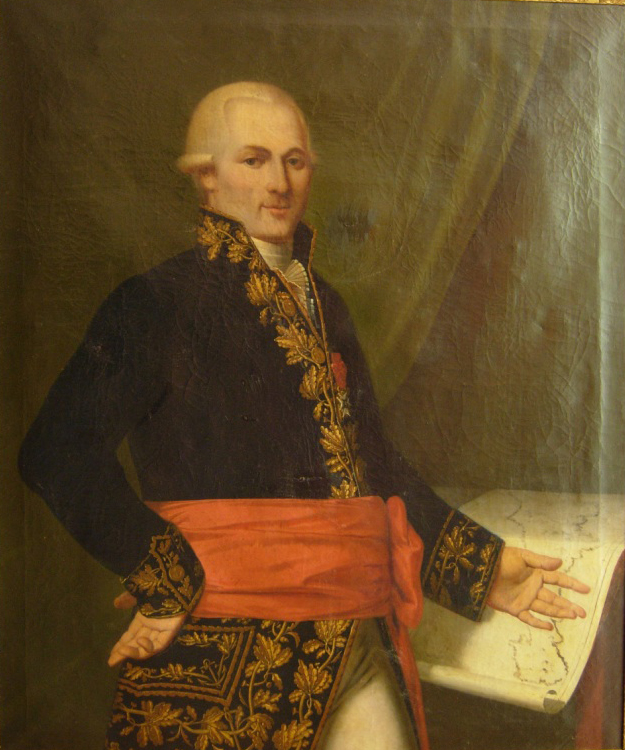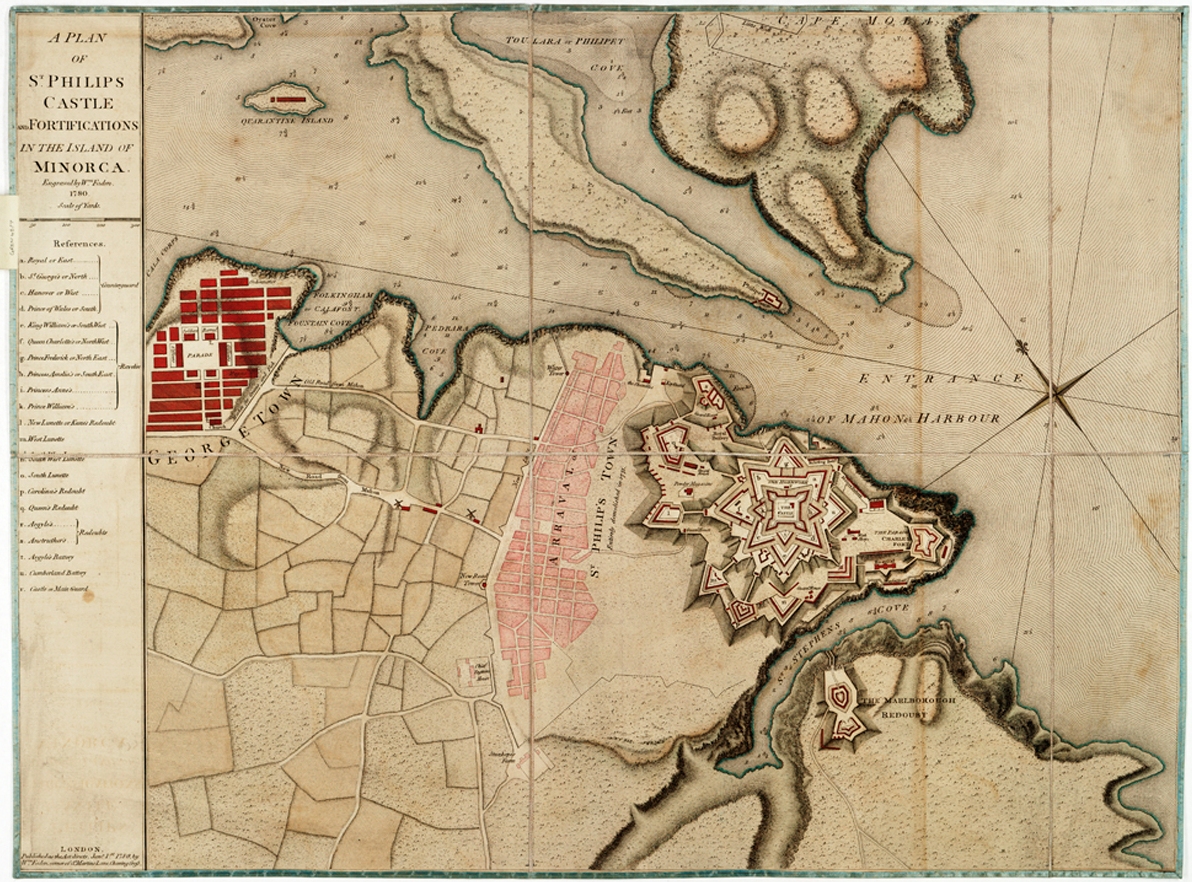|
French Ship Fendant (1777)
The ''Fendant'' was a 74-gun ship of the line of the French Navy. Designed by Antoine Groignard, she was the first ship to be built under a roof cover. She served in Suffren's campaign against the British in India during the American Revolutionary War, and was wrecked in 1783 near Pondicherry. Career Started in May 1772 on a design by Antoine Groignard, construction of ''Fendant'' proceeded slowly, due to shortages in timber in Rochefort. In November 1771, a permanent roof was erected over her stacks, as well as that of '' Réfléchi'', making the first ships to be completed in a covered dock. ''Fendant'' was commissioned in December 1776 under Captain Louis de Rigaud de Vaudreuil. She took part in the Battle of Ushant, where she sustained five killed and 27 wounded. ''Fendant'' served in the Anglo-French War, notably taking part in the Battle of Grenada. In July 1781, she fought in the Invasion of Minorca before being sent to the Indian Ocean in November to reinforce ... [...More Info...] [...Related Items...] OR: [Wikipedia] [Google] [Baidu] |
Flag Of The Kingdom Of France (1814-1830)
A flag is a piece of fabric (most often rectangular or quadrilateral) with a distinctive design and colours. It is used as a symbol, a signalling device, or for decoration. The term ''flag'' is also used to refer to the graphic design employed, and flags have evolved into a general tool for rudimentary signalling and identification, especially in environments where communication is challenging (such as the maritime environment, where semaphore is used). Many flags fall into groups of similar designs called flag families. The study of flags is known as " vexillology" from the Latin , meaning "flag" or "banner". National flags are patriotic symbols with widely varied interpretations that often include strong military associations because of their original and ongoing use for that purpose. Flags are also used in messaging, advertising, or for decorative purposes. Some military units are called "flags" after their use of flags. A ''flag'' (Arabic: ) is equivalent to a b ... [...More Info...] [...Related Items...] OR: [Wikipedia] [Google] [Baidu] |
Battle Of Grenada
The Battle of Grenada took place on 6 July 1779 during the American Revolutionary War in the West Indies between the British Royal Navy and the French Navy, just off the coast of Grenada. The British fleet of Admiral John Byron (the grandfather of Lord Byron) had sailed in an attempt to relieve Grenada, which the French forces of the Comte D'Estaing had just captured. Incorrectly believing he had numerical superiority, Byron ordered a general chase to attack the French as they left their anchorage at Grenada. Because of the disorganized attack and the French superiority, the British fleet was badly mauled in the encounter, although no ships were lost on either side. Naval historian Alfred Thayer Mahan described the British loss as "the most disastrous ... that the British Navy had encountered since Beachy Head, in 1690." Background Following the entry of France into the American War of Independence as an American ally in early 1778, French Admiral the Comte D'Estaing ... [...More Info...] [...Related Items...] OR: [Wikipedia] [Google] [Baidu] |
Shipwrecks In The Bay Of Bengal
A shipwreck is the wreckage of a ship that is located either beached on land or sunken to the bottom of a body of water. Shipwrecking may be intentional or unintentional. Angela Croome reported in January 1999 that there were approximately three million shipwrecks worldwide (an estimate rapidly endorsed by UNESCO and other organizations). When a ship's crew has died or abandoned the ship, and the ship has remained adrift but unsunk, they are instead referred to as ghost ships. Types Historic wrecks are attractive to maritime archaeologists because they preserve historical information: for example, studying the wreck of revealed information about seafaring, warfare, and life in the 16th century. Military wrecks, caused by a skirmish at sea, are studied to find details about the historic event; they reveal much about the battle that occurred. Discoveries of treasure ships, often from the period of European colonisation, which sank in remote locations leaving few livin ... [...More Info...] [...Related Items...] OR: [Wikipedia] [Google] [Baidu] |
Ships Of The Line Of The French Navy
A ship is a large watercraft that travels the world's oceans and other sufficiently deep waterways, carrying cargo or passengers, or in support of specialized missions, such as defense, research, and fishing. Ships are generally distinguished from boats, based on size, shape, load capacity, and purpose. Ships have supported exploration, trade, warfare, migration, colonization, and science. After the 15th century, new crops that had come from and to the Americas via the European seafarers significantly contributed to world population growth. Ship transport is responsible for the largest portion of world commerce. The word ''ship'' has meant, depending on the era and the context, either just a large vessel or specifically a ship-rigged sailing ship with three or more masts, each of which is square-rigged. As of 2016, there were more than 49,000 merchant ships, totaling almost 1.8 billion dead weight tons. Of these 28% were oil tankers, 43% were bulk carriers, and 13% were co ... [...More Info...] [...Related Items...] OR: [Wikipedia] [Google] [Baidu] |
Flag Captain
In the Royal Navy, a flag captain was the captain of an admiral's flagship. During the 18th and 19th centuries, this ship might also have a "captain of the fleet", who would be ranked between the admiral and the "flag captain" as the ship's "First Captain", with the "flag captain" as the ship's "Second Captain". Unlike a "captain of the fleet", a flag-captain was generally a fairly junior post-captain Post-captain is an obsolete alternative form of the rank of captain in the Royal Navy. The term served to distinguish those who were captains by rank from: * Officers in command of a naval vessel, who were (and still are) addressed as captain ..., as he had the admiral to keep an eye on him, but – like a "captain of the fleet" – a "flag captain" was a post rather than a rank. References F Royal Navy {{navy-stub ... [...More Info...] [...Related Items...] OR: [Wikipedia] [Google] [Baidu] |
Armand De Saint-Félix
Armand de Saint-Félix (20 September 1737 – 13 August 1819) was a French Navy officer and admiral. Biography Saint-Félix joined the Navy in 1755. he served on the 16-gun ''Calypso'', where he took part in the Battle of Quiberon Bay on 20 November 1759. In 1762, he was promoted to Ensign. In 1771, he was appointed to command the corvette ''Heure de Berger'' and appointed to conduct an exploration voyage to seek the Phantom island of Juan de Lisboa. Promoted to Lieutenant in 1772, he brought Maurice Benyovszky to Madagascar for an attempt at founding a trading post. War of American Independence During the War of American Independence, Saint-Félix served on ''Solitaire'' and took part in the Battle of Ushant. He then transferred onto ''Protée'', and was taken prisoner when she was captured in the action of 24 February 1780. Promoted to Captain in 1781, he was appointed to the frigate ''Fine'' and sailed to Isle de France (Mauritius). He took command of the 64-gun ... [...More Info...] [...Related Items...] OR: [Wikipedia] [Google] [Baidu] |
Captain Of The Fleet
In the Royal Navy of the 18th and 19th centuries a captain of the fleet could be appointed to assist an admiral when the admiral had ten or more ships to command. The equivalent post was called fleet captain in the U.S. Navy of the 18th and 19th century. This was a post rather than a rank in itself, and if its holder's permanent rank was below that of an admiral then he ranked just below the most junior rear-admiral and was entitled to the pay and allowance of a rear-admiral whilst he held the post. The admiral's commands would be issued through his captain of the fleet, and the fleet's responses would be passed back to him. This role of intermediary between the overall commander and the commanded was analogous to that of a commander on a large warship, through whom orders were relayed to the crew and responses received. He would also act in some senses and instances as the admiral's chief of staff. A captain of the fleet would usually be stationed on the admiral's flagship as ... [...More Info...] [...Related Items...] OR: [Wikipedia] [Google] [Baidu] |
Antoine De Thomassin De Peynier
Louis Antoine de Thomassin de Peynier, known as Antoine de Thomassin, comte de Peynier (27 September 1731 – 11 October 1809) was an officer of the French Royal Navy and a colonial administrator of the Kingdom of France. Biography Early years in the French Royal Navy Peynier joined the Navy in 1744, aged just 13, taking part in the War of the Austrian Succession. In 1751, he was promoted to Ensign, and assigned a diplomatic mission in the Mediterranean between May and September 1752. Serving on the 64-gun ''Triton'', he called the ports of Tripoli, Smyrna, Tunis, and Algiers. When the Seven Years' War broke out in 1756, Antoine was on a four-year campaign in the Indies. During that mission, in 1757, he was promoted to Lieutenant. In 1759, he was shot in the head, sustaining a lasting and debilitating injury. After the Treaty of Paris restored peace in 1763, Peynier was given command of the 32-gun frigate ''Malicieuse'', making a voyage of exploration and diplomacy in ... [...More Info...] [...Related Items...] OR: [Wikipedia] [Google] [Baidu] |
Battle Of Cuddalore (1783)
The Battle of Cuddalore was a naval battle between a British fleet, under Admiral Sir Edward Hughes with Admiral L.J. Weiland, and a smaller French fleet, under the Bailli de Suffren, off the coast of India during the American Revolutionary War. This war sparked the Second Mysore War in India. In the battle, taking place near Cuddalore on 20 June 1783, Suffren commanded the engagement from the frigate '' Cléopâtre'' and won what is generally considered a victory.Palmer p.161 Peace had already been agreed upon in Europe, but that news had yet to reach India, making this the final battle of the war. On the death of French ally Hyder Ali, the British decided to retake Cuddalore. They marched troops from Madras, and began preparing for a siege. The French fleet, under Suffren, appeared at Cuddalore on 13 June. A week of fickle winds prevented either side from engaging until 20 June, when Suffren attacked. No ships were seriously damaged, but each side lost about 100 men with a ... [...More Info...] [...Related Items...] OR: [Wikipedia] [Google] [Baidu] |
Invasion Of Minorca (1781)
The Franco-Spanish reconquest of Menorca (historically called "Minorca" in English) from the British in February 1782, after the Siege of Fort St. Philip lasting over five months, was an important step in the achievement of Spain's aims in its alliance with France against Britain during the American Revolutionary War. The ultimate result was the devolution of the island to Spain in the Treaty of Paris in 1783. Background At the eastern end of the island of Menorca is the port of Mahón, one of the best deep-water anchorages in the Mediterranean Sea. For a naval power with no Mediterranean coast, possession of Menorca, therefore, was of major strategic advantage, and for most of the 18th century, Menorca was under British control. The narrow entrance to the port was guarded by a fort, known to the British as St. Philip's Castle, a translation of the original Spanish, ''el castillo de San Felipe'', which (with two outlying fortlets, San Carlos and Marlborough) was massively str ... [...More Info...] [...Related Items...] OR: [Wikipedia] [Google] [Baidu] |






